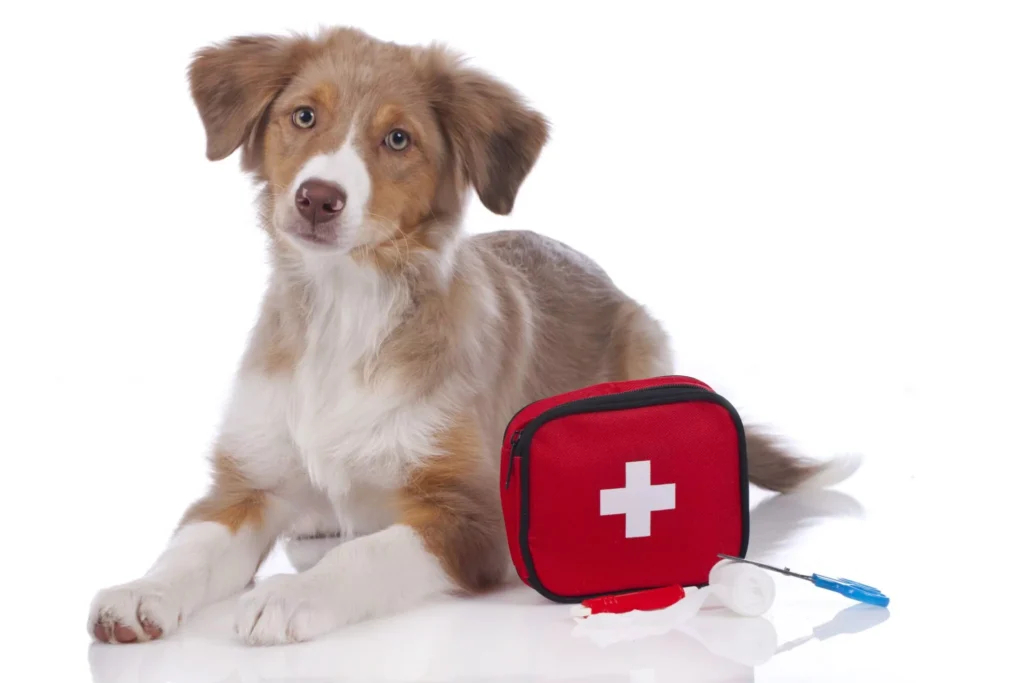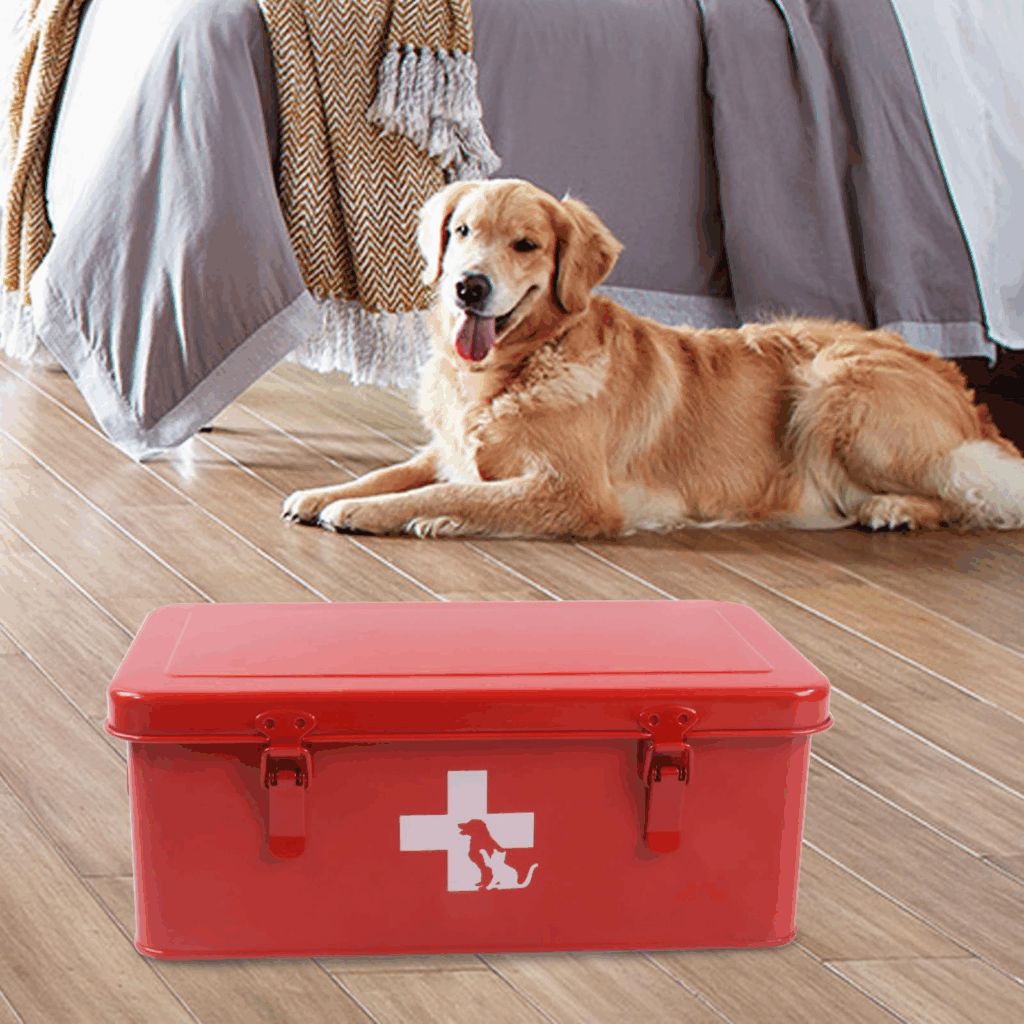Ensuring the well-being of your small dog is always a top priority. One of the most significant ways to do this is by having a customized home first aid kit, exclusively tailored to their needs. This piece delves into the essentials of pet care, focusing on creating the perfect first aid kit for your furry friend.
The importance of a home first aid kit for your pet cannot be overstated. However, knowing exactly what to include in this kit can be a daunting task. This is where this guide comes into play. It provides comprehensive details about every tool, medication, and piece of equipment that should be a part of your pet’s first aid kit.

From essential medications to necessary tools, this comprehensive guide will cover it all. It offers practical tips on how to assemble a kit that can cater to a variety of potential emergencies. Plus, it’ll provide useful insights into how you can quickly and effectively respond to different health crises that your small dog might face.
Throughout the guide, you’ll discover the key aspects of pet care that every dog owner should be aware of. This includes understanding the unique needs of small dogs and how to meet them. By creating a customized home first aid kit, you can ensure that your beloved pet receives the best possible care at all times.
So whether you’re a seasoned pet owner or a first-time dog parent, this guide is an invaluable resource. It’s the ultimate guide to assembling a robust, life-saving first aid kit that’s customized to your small dog’s needs. Take a step towards ensuring your pet’s safety and well-being today by reading on and discovering the essentials of pet care. 🐶🏡👩⚕️
Understanding the Need for a Dog First Aid Kit
When it comes to caring for your small dog, one area that often gets overlooked is emergency preparedness. While we all hope that nothing will ever happen to our beloved pets, accidents can and do happen. This is why every pet owner should have a customized home first aid kit for their dog. This kit will contain all the necessary items you might need in an emergency situation. Just like a human first aid kit, a dog first aid kit should include items for treating minor injuries, as well as items for stabilizing your dog in case of a more serious accident.
The Role of a First Aid Kit
A first aid kit plays a crucial role in providing immediate medical attention to your pet before you can reach a vet. It’s meant to bridge the gap between the accident and professional help. In some cases, having a well-equipped first aid kit can even be the difference between life and death for your small dog. However, it’s important to remember that while a first aid kit is essential, it doesn’t replace the need for professional veterinary care.
Organizing Your Small Dog First Aid Kit Effectively
Once you’ve gathered the necessary items for your small dog’s first aid kit, the next step is organizing them in a way that makes access quick and easy during emergencies. The goal is to reduce stress and confusion in critical moments by having a clearly labeled and efficiently arranged kit.
Consider using a plastic tackle box, first aid bag, or tool organizer with multiple compartments. Label each section by category—wound care, medications, tools, documents, and comfort items. Keep an inventory sheet in the lid or side pocket, listing all items and their expiration dates. This simple addition can save precious time and help you stay on top of replenishments.
For extra preparedness, you may even want to keep one first aid kit in your home and another in your car, especially if you travel often with your pet. A portable version in a durable, waterproof container is ideal for on-the-go use.
Medications to Include in a First Aid Kit for Small Dogs
Having a small selection of veterinarian-approved over-the-counter medications can be incredibly helpful. These should only be used under your vet’s guidance and with clear dosing instructions.
- Antihistamines: For allergic reactions, insect bites, or hives. Diphenhydramine (Benadryl) is commonly recommended, but you must confirm the correct dosage with your vet.
- Anti-diarrheal medications: Some medications like kaolin-pectin or vet-approved probiotics can help manage digestive upset.
- Eye drops or saline solution: Useful for flushing out debris or irritants from your dog’s eyes.
- Electrolyte solution: Ideal for dehydration due to diarrhea or vomiting.
- Styptic powder: Helps stop minor bleeding from nails or small cuts.
Always store medications in waterproof packaging and label them clearly. Be sure to include dosage instructions and any precautions.
Training Yourself to Use First Aid Kit Items
Even the most well-stocked first aid kit will be ineffective without the knowledge of how to use it. Investing time in a basic pet first aid training course can dramatically increase your confidence in emergency situations. Courses are available online or through local veterinary clinics and animal organizations.
Important skills to learn include:
- How to apply bandages and splints
- How to perform canine CPR
- How to identify signs of shock or poisoning
- Safe ways to restrain and transport an injured pet
Some pet first aid guides also come in printable versions or as apps. Keeping a printed quick-reference guide inside your kit is a helpful backup in case of digital device failure.
Customizing the Kit Based on Your Dog’s Health Conditions
If your small dog has existing medical conditions, tailor the first aid kit to include specific medications and emergency instructions. For instance:
- Dogs with epilepsy might need emergency seizure medication
- Diabetic dogs should have glucose gel or dextrose on hand
- Allergic dogs may require an epinephrine auto-injector (prescribed by a vet)
Also, include a copy of your dog’s medical records and vaccination history in a waterproof folder. This information is crucial if you need to visit a new vet while traveling or during an emergency.
Seasonal Considerations for First Aid
The contents of your kit may need adjusting based on the season. For example:
- Summer: Include sunscreen for dogs (especially short-haired breeds), paw wax to protect against hot pavement, and cooling pads.
- Winter: Add paw balm for cracked pads, booties to prevent ice burns, and a thermal blanket.
Being prepared for weather-specific risks shows the level of care and foresight necessary to ensure your dog’s comfort and safety year-round.
Including Tools for Emergency Transport
Injured dogs may need to be transported to the vet without walking. Include these transport aids in your kit:
- Slip leash or adjustable harness: Useful if your dog’s collar breaks or isn’t nearby.
- Portable pet stretcher or blanket: Allows you to lift your dog without worsening an injury.
- Towel or wrap: Can be used as padding or a makeshift sling for support.
Ensure you practice how to safely lift and carry your dog. Improper lifting can cause further harm, especially in cases involving spinal injury or limb trauma.
Monitoring and Responding to Vital Signs
Understanding how to check your dog’s vital signs can be a game-changer in emergencies. Include a laminated card in your kit that shows normal ranges for:
- Temperature (normal: 101 to 102.5°F)
- Heart rate (small dogs: 100 to 160 beats per minute)
- Respiration rate (10 to 30 breaths per minute)
Pack a small digital thermometer and stethoscope if possible. Practice using them when your dog is calm so you can detect changes faster when needed.
Poison Control and Toxicity Response Items
Small dogs are particularly susceptible to toxins due to their size. Your kit should include:
- Activated charcoal: Used to absorb toxins in cases of poisoning (only under vet guidance).
- Contact information for ASPCA Poison Control or Pet Poison Helpline
- Gloves and protective eyewear: For safely handling chemical spills or contaminated fur.
Know the common household items that are toxic to dogs, such as chocolate, grapes, certain essential oils, and cleaning products. Store these separately and out of reach.
Emergency Documents and Identification
Along with health records, your kit should contain:
- Recent photo of your dog: Useful in case your dog becomes lost during an emergency
- Microchip number and registration info
- List of nearby 24-hour emergency vet clinics
- Authorization card: If someone else needs to transport your dog in your absence, this allows them to make decisions.
Consider storing these documents in both printed and digital formats on a secure cloud platform you can access from your phone.
Hygiene and Sanitation Supplies
In emergencies, maintaining cleanliness is key to preventing infection. Add the following to your kit:
- Antibacterial wipes
- Latex or nitrile gloves
- Disinfectant spray
- Waste bags
- Hand sanitizer
These items are not just for your dog—they also protect you and others from contamination while administering care.
Dealing With Common Injuries
Your kit should enable you to handle:
- Cuts and abrasions: Clean with saline or antiseptic, apply gauze and vet wrap
- Paw pad injuries: Use booties or soft wraps to prevent further damage
- Eye irritation: Flush with saline and keep your dog from rubbing the area
- Bug bites or stings: Apply a cold compress and give antihistamines under vet advice
Familiarize yourself with the symptoms of serious conditions such as bloating, heatstroke, or seizures, and know when immediate vet care is necessary.
Organizing and Maintaining Your Dog First Aid Kit
Once you’ve gathered all your items, you need to organize them in a way that allows you to easily and quickly find what you need in an emergency situation. A tackle box or small toolbox can be an excellent container for a dog first aid kit. You can use the different compartments to separate and organize your items.

Regular Maintenance is Key
It’s not enough to just put together a first aid kit, you also need to maintain it. This means regularly checking the kit to ensure that all items are in good condition and have not expired. Expired medications or ointments won’t be as effective, and could even harm your dog. So, make sure to always check the expiration dates and replace items as needed.
Knowing How to Use Your First Aid Kit
While having a well-stocked first aid kit is crucial, it’s equally important to know how to use it. Consider taking a pet first aid course to learn the basics of pet care and first aid. This could include learning how to bandage a wound, how to perform CPR on a dog, and how to recognize the signs of common illnesses and injuries. These skills not only build your confidence but also ensure you can act quickly and effectively when your dog needs immediate help.
Always Seek Professional Help
Finally, remember that while a first aid kit can help you manage an emergency situation, it’s not a substitute for professional veterinary care. Always seek professional help as soon as possible after administering first aid. Your vet can provide further treatment and care, ensuring the best possible outcome for your beloved pet.
Conclusion
In conclusion, prioritizing the health and safety of your small dog by creating a customized home first aid kit is an essential aspect of pet care. It’s crucial to prepare for any potential emergencies or accidents that may occur, ensuring your pet’s well-being is prioritized. Remember to always stock up on necessities like bandages, antiseptic wipes, tweezers, a blanket for shock, and a tick remover, among others. But, don’t forget about the personalized items, such as specific medication or health aids your pet might need.
Regularly updating and maintaining your pet first aid kit ensures that all items are in good condition and ready to use when needed. Furthermore, knowing how to use these items properly can be life-saving. It is advisable to seek professional advice or training in pet first aid. Remember, a first aid kit is not a replacement for veterinary care but can provide immediate relief or stabilization until professional help can be sought.
By putting together a customized first aid kit for your small dog, you are demonstrating responsible pet ownership and a deep love and commitment to the welfare of your pet. Every pet owner should take this proactive step today for the safety and health of their furry friends. 🐾



